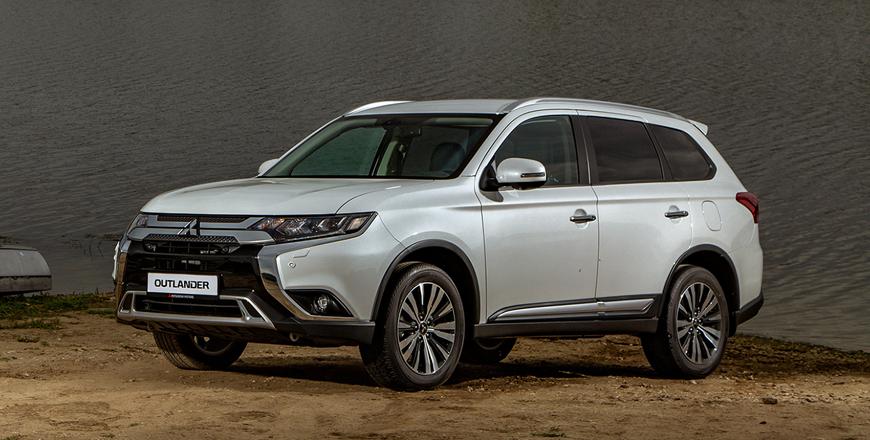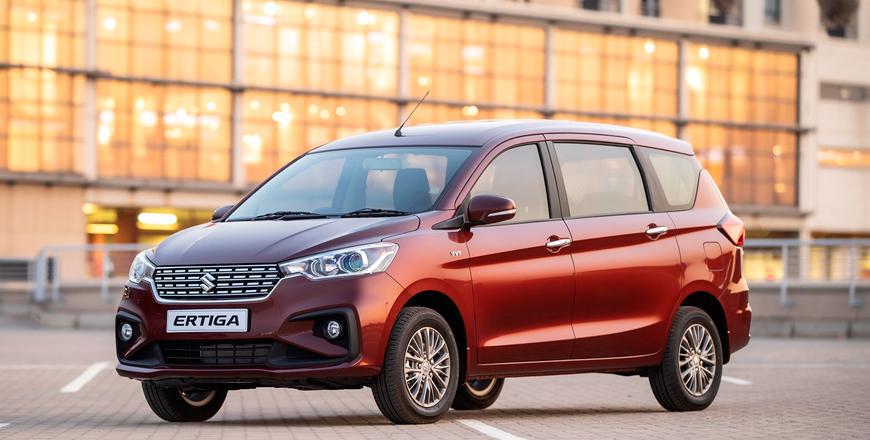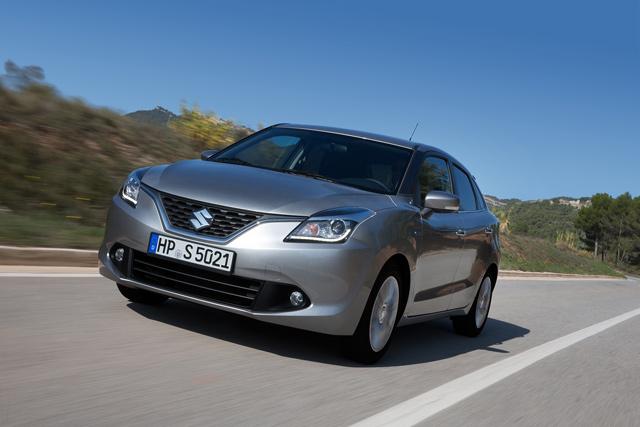You are here
Mitsubishi Outlander GLX: Comfortable and convenient
By Ghaith Madadha - Feb 14,2022 - Last updated at Feb 14,2022

Photo courtesy of Mitsubishi
First introduced in 2012 and revised twice since, Mitsubishi’s long-serving third generation Outlander crossover SUV remains a convincing proposition even as it is being phased out and replaced by a new model borne of the brand’s integration into the Renault-Nissan Alliance since 2016.
An attainable middle of the road family daily driver with plenty of comfort and convenience, the Outlander may not be a high profile player in its segment, but is one that ticks many of the right boxes.
Assertive evolution
A more interesting drive with sportier dynamics than expected, the Outlander’s design has come to reflect this better since its first major face-lift of 2015 and second aesthetic revision circa 2018. Shedding some less than inspiring front bumper and rear light design elements from its 2012 incarnation, the Outlander instead adopted a more chiselled and assertive styling sensibility with more pronounced and sharper details, including a snoutier and hungrier pinched-in and blacked-out bumper segment, framed by C-shaped chrome elements.
With slim, strongly browed and dramatic lights and narrow twin-slat grille, the Outlander’s dramatic front view includes a big lower intake segment, revised again in 2018 with a chrome frame. Smartened up subtly in its last revision for a more contemporary look, the Outlander well-reconciles practicality and design expression, and features a gently rising waistline converging with a similarly descending roofline. Meanwhile, sportier design elements include a defined crease-line running along the Outlander’s flank and a discrete tailgate spoiler.
Smooth and seamless
Available regionally in three power-train options including two petrol engines, and PHEV (plug-in hybrid electric vehicle) model, the entry-level GLX is powered by a naturally-aspirated 2.4-litre 4-cylinder engine. Transversely mounted and driving all four wheels, with a front bias and through a continuously variable transmission (CVT) system, it develops 165BHP at 6,000rpm and 164lb/ft at 4,100rpm, which allows it to carry its comparatively restrained 1,535kg mass through 0-100km/h in reasonably brisk 10.5-seconds, through 0-400-metres in 17.7-seconds and onto a 198km/h top speed.
Smooth in operation and as refined as expected in its class, the Outlander 2.4L’s
Under-square design engine is responsive from standstill and progressive in delivery, as it climbs through revs to redline. Versatile, it allows for confident, if not quite muscular, on the move acceleration, with 120-140km/h dispatched in 6.1-second. Its CVT meanwhile feature a wide range of ever shifting transmission ratios to well exploit engine output for brisk acceleration, flexible responsiveness and quiet low rev cruising.
Responsive ratios
Silky smooth and efficient, the Outlander’s CVT — like other such systems — has a slight slingshot feel under harder acceleration, with ratios altering and speed picking up while revs maintain a more efficient engine speed. That said, the Outlander’s CVT does allow easy redline revving, while a selectable “low” transmission setting holds more aggressive ratios and allows the engine to rev more freely for more driver control. However, the Outlander’s CVT doesn’t feature manually pre-set ratios to mimic a conventional gearbox.
Stable and smooth at speed, the Outlander is a confident and comfortable cruiser. Significantly lighter than its 1.9-tonne PHEV sister model, the entry-level Outlander 2.4L may not have the same planted and heavy feel on highways, but it is a more nimble vehicle with a tidier turn-in and better body lean control. Eager into corners for a high riding crossover, the Outlander uses a quick, light and responsive electric-assisted steering system, and is comparatively agile through narrow winding roads when driven briskly.
Comfort and control
Settled over road imperfections and comfortable over bumps, the Outlander meanwhile grips well through corners, where its four-wheel-drive system sends power rearwards for added traction when necessary. Though no dedicated off-roader, it features a 4WD Lock mode, and useful 21° approach, 19° break-over and 22.5°departure angles, and generous 190mm ground clearance. Narrower than many competitors and with a bigger glasshouse for better visibility, the Outlander is also easily placed on road, and manoeuvrable in town with its tight 10.6-metre turning circle.
Contemporarily stylish, if somewhat clinical and business-like, the Outlander’s cabin has a more up-market feel than many in-segment competitors and features user-friendly controls, and driver-oriented layouts and good materials, driving position and passenger room. Practical with well-spaced front and middle row seating, the Outlander is also available with optional 3-row, 7-seat capacity. Well-equipped with creature comforts, and safety and infotainment features including dual zone climate control and Isofix child seat latches, the entry-level Outlander GLX, however, lacks many driver assistance systems of higher spec versions.
TECHNICAL SPECIFICATIONS
Engine: 2.4-litre, transverse 4-cylinders
Bore x stroke: 88 x 97mm
Valve-train: 16-valve, variable valve timing, DOHC
Gearbox: Continuously variable transmission (CVT) auto, four-wheel-drive
Transmission ratios: 2.631-0.378
Reverse/final drive: 1.96/6.026
Power, BHP (PS) [kW]: 165 (167) [123] @6,000rpm
Specific power: 70BHP/litre
Power-to-weight: 107.5BHP/tonne
Torque, lb/ft (Nm): 164 (222) @4,100rpm
Specific torque: 94Nm/litre
Torque-to-weight: 144Nm/tonne
0-100km/h: 10.5-seconds
120-140km/h: 6.1-seconds
0-400-metres: 17.7-seconds
Top speed: 198km/h
Fuel capacity: 60-litres
Length: 4,695mm
Width: 1,810mm
Height: 1,710mm
Overhang, F/R: 990/1,035mm
Wheelbase: 2,670mm
Track: 1,540mm
Ground clearance: 190mm
Approach/break-over/departure angle: 21°/19°/22.5°
Kerb weight: 1,535kg
Gross vehicle weight: 2,210kg
Seating capacity: 7
Steering: Electric-assisted rack and pinion
Turning radius: 10.6-metres
Suspension, F/R: MacPherson strut/multi-link, anti-roll bars
Brakes, F/R: Ventilated discs/discs
Tyres: 215/70R16
Related Articles
Slightly larger than its predecessor, the Suzuki Ertiga arguably went up a segment from “mini” to “compact” MultiPurpose Vehicle (MPV) when
A reasonably priced, economic and compact hatchback that nonetheless looks and feels contemporary, the Suzuki Baleno is the sort of car Jord
Among the most popular player in the popular compact pick-up segment which accounts for some 90 per cent of truck sales in the Middle East,


















